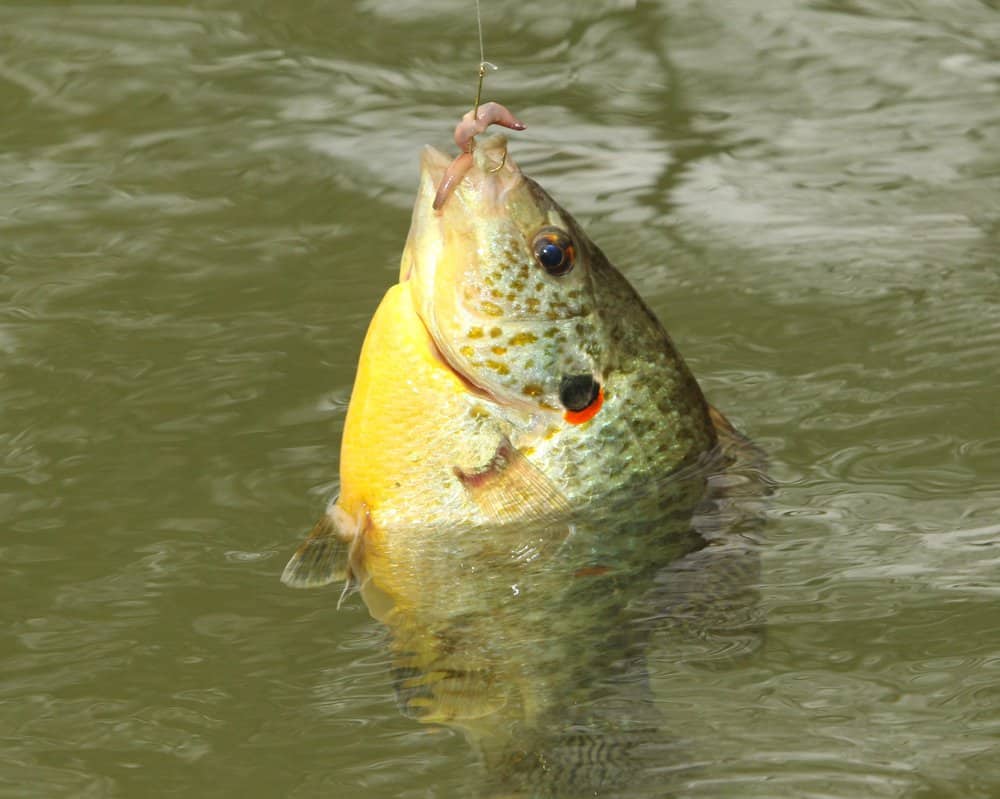First full moon in June prompts annual spike in cricket sales
ON 05-31-2023

May 31, 2023
Randy Zellers
Assistant Chief of Communications
LITTLE ROCK — Bait shops across Arkansas are preparing for another wave of bream to go to their spawning “beds” and the subsequent wave of anglers looking to fill their cricket cages to chase these feisty fighters during the prime days of the bream spawn.
“The first full moon in June,” was a saying told to me by Johnny Riley, the first boss I ever worked for. Riley knew better than anyone when the bream spawn was because his livelihood depended upon it. He owned and operated Riley Bait Farm in Southaven, Mississippi. I spent much of my free time during my sophomore year of high school feeding and watering crickets he hatched and raised for bait shops to sell throughout eastern Arkansas and northern Mississippi. It was hot, sweaty and stinky work, but for a kid who just got his driver’s license, it paid enough to keep gas in the family car and fix a few bent bumpers and dings my folks pretended not to notice.

Three dates always stood out as the hectic time for those little brown morsels of bream candy: Memorial Day, Labor Day and that first full moon in June. The first two were the result of the traditional three-day weekends that bookend summer. The last spike was the product of some primordial switch that triggered redear sunfish and bluegill throughout the Mid-South to bed up for their spawn and destroy anything that found its way into their spawning territory.
Bluegill and redear are the primary bream species anglers will try to catch in Arkansas. Both species get large enough to put up a healthy fight on an ultralight rod and make bringing home a limit for the dinner table well worth the effort. Both prefer to spawn on gravel bottoms in shallow water. Both also are colony nesters, meaning they will gather in large groups next to each other to help protect each other’s nests and mob intruders. Each bream will make a small dish-shaped depression in the lake bottom to deposit eggs, fertilize them and protect them from thieves. With some searching, anglers can find massive honeycomb-shaped blocks of nests that can produce for days. Often, the same area will produce year-after-year because it has just the right mix of bottom content, nearby cover and water depth to play nursery duty.

Finding bream beds can take a little time, but it’s well worth it with the large amount of sunfish that can be caught. Look for those gravel bottom areas on the sides of secondary points and other areas shielded from waves and current. Old road beds from before lakes were flooded also offer that hard bottom spawning bream seek. In some lakes that see drawdowns, you can sometimes find the dish-shaped remnants of last year’s beds during winter and mark them for future fishing opportunities. If the water’s clear enough, you may even see the depressions themselves as you scan the shallows. Modern electronics can make finding bream beds a little easier, as many anglers have learned to use side-scanning sonar to locate these patches of pockmarked sand and gravel.
Once you find an active bream bed, you’ll know it instantly. Rarely will a cricket or red wiggler be left unmolested for more than a few seconds if it’s in the neighborhood of a spawning bluegill or redear. Anglers without the benefit of sonar can simply cover water pitching to likely targets along the way until they make contact. The Arkansas Game and Fish Commission’s Beginner’s Guide to Fishing is chock full of great information on how to rig up rods, reels, hooks and line to make the most of your fishing trip.

Be careful not to catch all the bream in the colony, however. Leaving a few behind to guard the nests can prompt more bream to set up shop between trips, replenishing your fishing area for a few trips before a bed plays out. Veteran bream anglers will keep a rotation of bream beds locked away in their heads and keep only five or 10 of the largest fish from each before moving on.
Even if you can’t make it to the water for the first full moon in June, there’s still plenty of opportunity for panfish in Arkansas throughout the summer. Spawning activities are likely to occur in the few days before and after each full moon of the summer as well. Even if you’re not able to time your trips with the lunar schedule, bream are one of the most cooperative species on Arkansas’s angling menu, especially if you have one of those little brown bugs that helped pay for some of this author’s wonder years.
CUTLINES:
Bream with Cricket
There’s just something magical about a brown cricket for fast action on bream.
Bluegill in Hand
Bluegill regularly reach sizes up to 1 pound, making them fun to chase and worth the effort for the dinner table.
Aerial Image
Some masses of bream beds can even be found through aerial images on tools like Google Earth when water recedes.
Redear Sunfish
If the baitshop is out of crickets, redear sunfish are also suckers for worms.
Recent News

Watch your wake
Jul. 2, 2025
Subscribe to Our Weekly Newsletter E-mails
Don’t miss another issue. Sign up now to receive the AGFC Wildlife Weekly Newsletter in your mailbox every Wednesday afternoon (Waterfowl Reports are published weekly during waterfowl season and periodically outside the season). Fishing Reports arrive on Thursdays. Fill in the following fields and hit submit. Thanks, and welcome!

